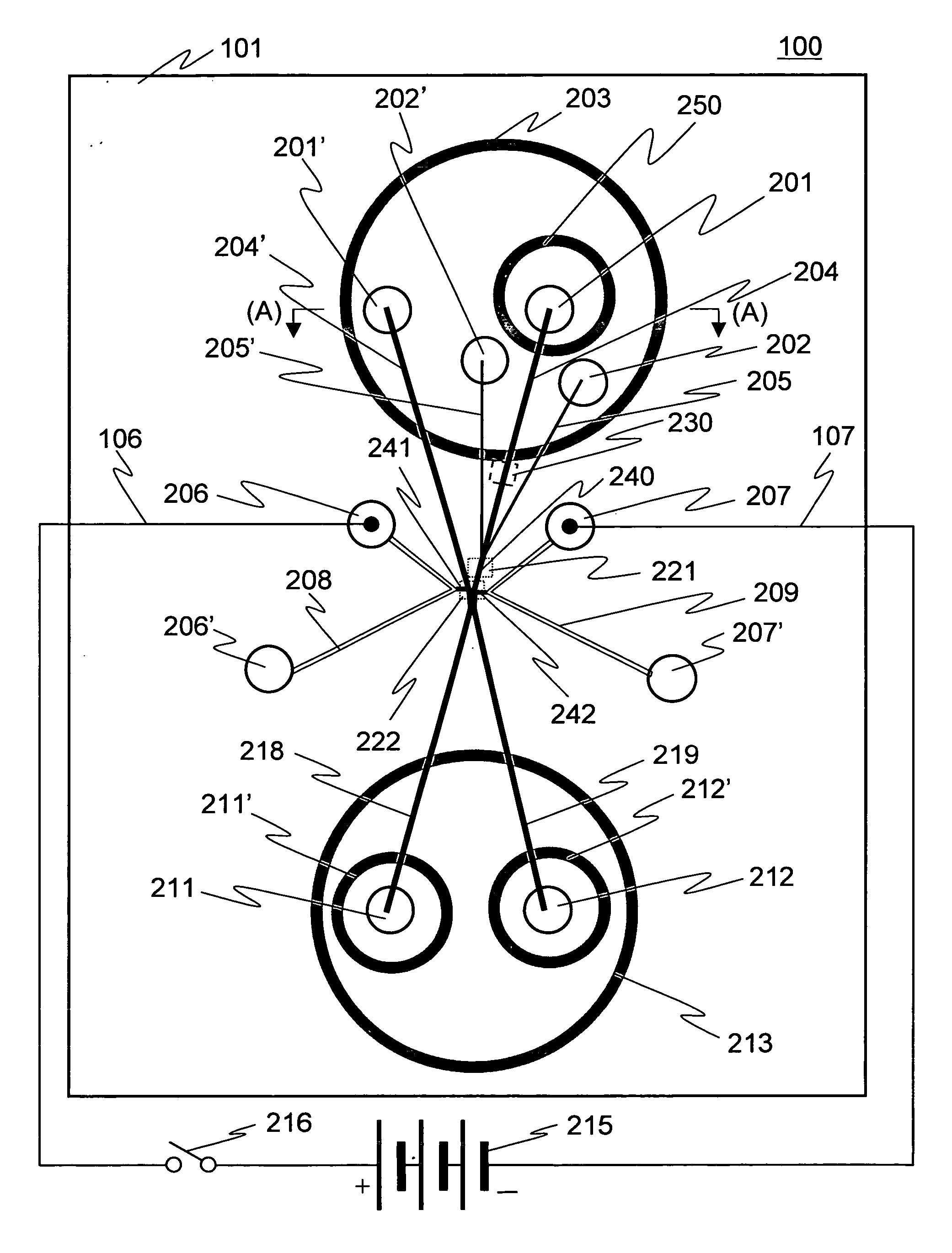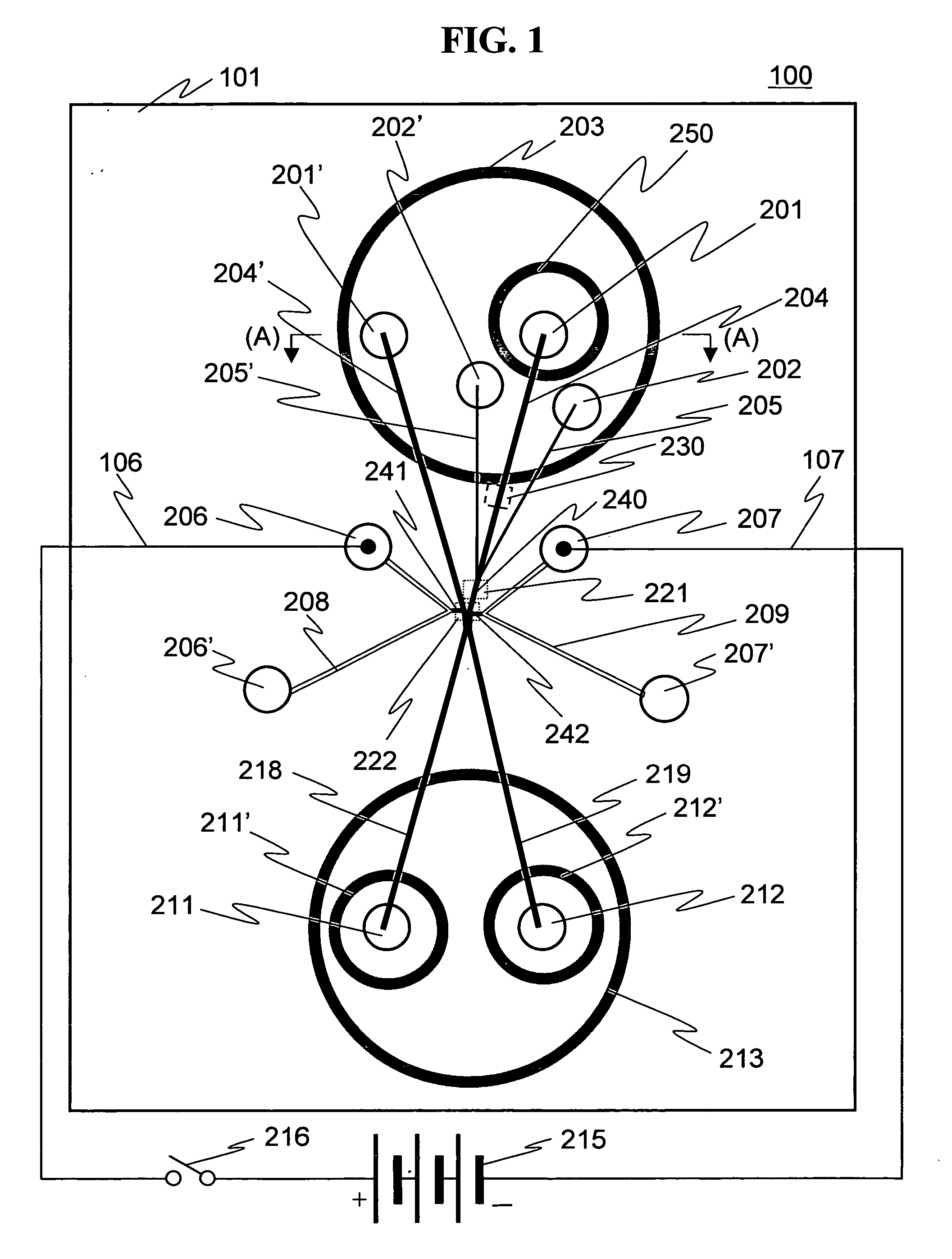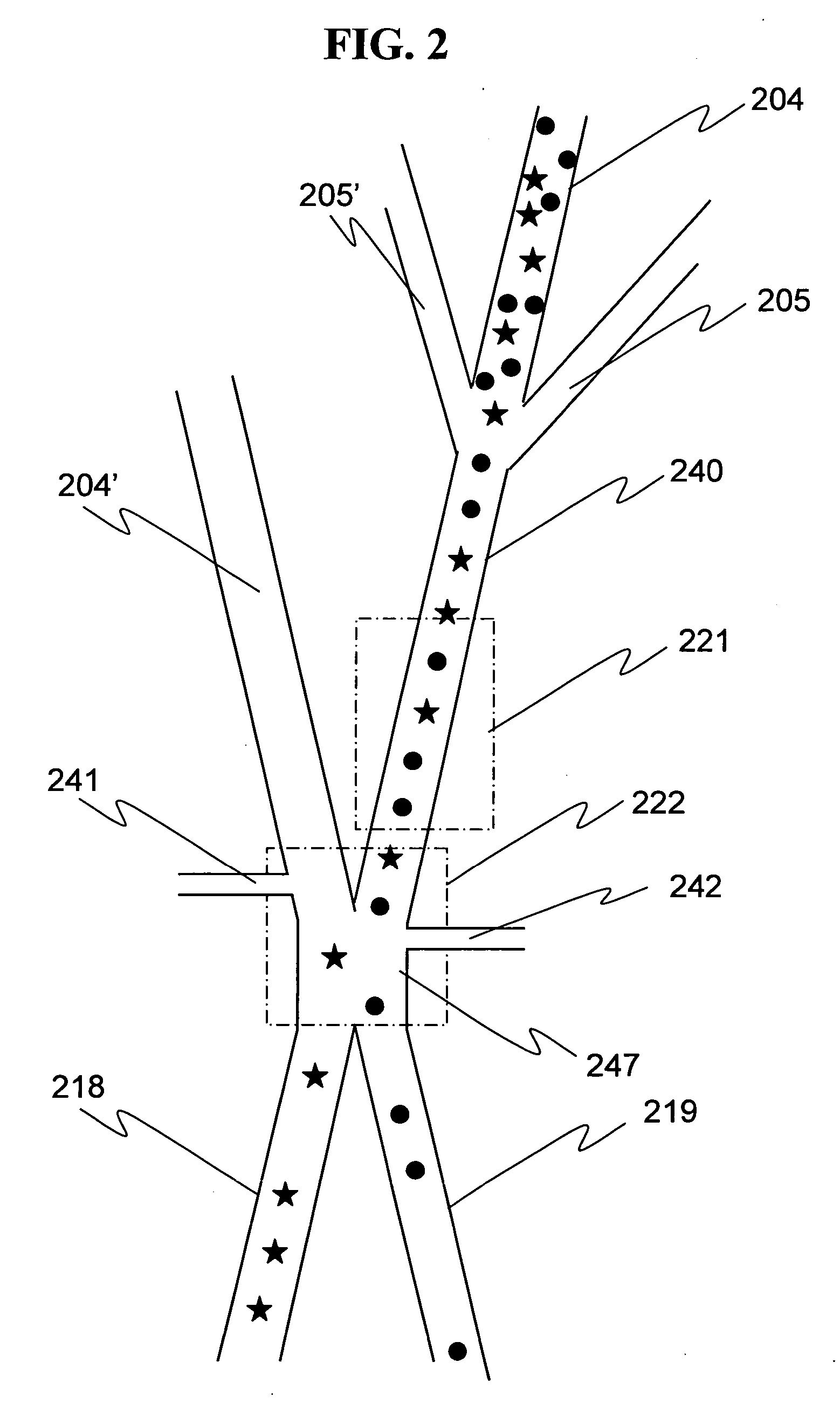Cell measuring and sorting chip
a cell and chip technology, applied in the field of cell sorters, can solve the problems of difficult to distinguish the connecting cells to sort and detect cells, difficult to stably form the jet stream using the sheath, and high practical cos
- Summary
- Abstract
- Description
- Claims
- Application Information
AI Technical Summary
Benefits of technology
Problems solved by technology
Method used
Image
Examples
first embodiment
[0065]FIG. 1 is a plan view schematically showing one example of system configuration of a cell sorter according to the present invention. A cell sorter 100 includes a substrate 101. The substrate 101 has a flow path provided on the bottom surface and an opening communicating with the flow path provided on the top surface, and the opening functions as a port for supplying a sample or a necessary buffer fluid. Furthermore, a reservoir is provided for supplying a sufficient quantity of buffer fluid and also for controlling a flow rate in each flow path. The flow paths can be prepared by means of the so-called injection molding in which plastics such as PMMA is injected into a metal mold. The chip substrate 101 has the size of 20×30×1 mm (t) as a whole. To form grooves and through holes engraved on the bottom surface of the substrate 101 into flow paths and wells, a laminate film with a thickness of 0.1 mm is thermally applied to the bottom surface with the grooves engraved thereon. Ce...
second embodiment
[0081] A gel electrode is described in detail below. A gel electrode section includes holes 206, 206′ and 207, 207′, a microstructure 208 connecting the holes 206, 206′ to each other, a microstructure 209 connecting the holes 207, 207′ to each other, and coupling sections 241, 242 based on a structure allowing liquid communication in the cell sorting region 222, as shown in FIG. 1. When a chip is prepared by means of injection molding, no gel is included in the gel electrode section. The following description assumes use of agarose gel containing an electrolyte as an electrolytic solution. The gel is prepared such that a 0.25M NaCl-0.296M sodium phosphate (pH 6.0) buffer fluid is used for forming the minus electrodes 209, 242, and 1% agarose gel containing 0.25M NaCl-0.282M sodium phosphate (pH 8.0) is used for forming the plus electrodes 208, 241. The pH is differentiated to prevent generation of bubbles in association with electrolysis when a current is supplied. Hydrogen ions gen...
third embodiment
[0097] An algorithm for recognizing and sorting cells by means of image recognition using the cell sorter chip 100 shown in FIG. 1 is described below. As described with reference to FIG. 1, the cell suspension is injected into the hole 201. A wall 250 for preventing diffusion of the cell suspension is provided around the hole 201. The wall 250 is prepared in the reservoir 203, and a liquid surface in the hole 201 is equal to that in the reservoir 203. The cells flow from the hole 201 to the flow path 204, and join together with the flow path 205 constituting a side flow at a position just ahead the cell detecting area 221. Because of the join, the state where the cells are concentrated toward a central portion of the flow path can be realized. Refer to FIG. 3.
[0098] Images of the cells passing over the cell detecting area 221 in the flow path 204 are picked up with a CCD camera. A CCD camera capable of picking up 200 frames per second can be used for this purpose. With this image p...
PUM
 Login to View More
Login to View More Abstract
Description
Claims
Application Information
 Login to View More
Login to View More - R&D
- Intellectual Property
- Life Sciences
- Materials
- Tech Scout
- Unparalleled Data Quality
- Higher Quality Content
- 60% Fewer Hallucinations
Browse by: Latest US Patents, China's latest patents, Technical Efficacy Thesaurus, Application Domain, Technology Topic, Popular Technical Reports.
© 2025 PatSnap. All rights reserved.Legal|Privacy policy|Modern Slavery Act Transparency Statement|Sitemap|About US| Contact US: help@patsnap.com



